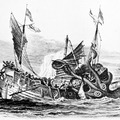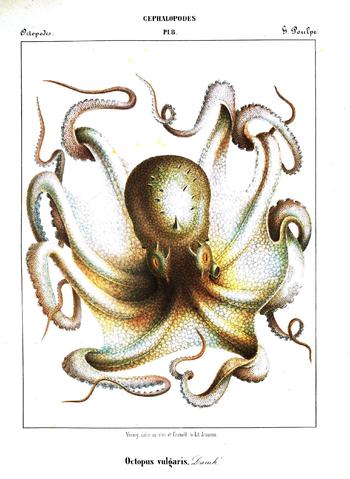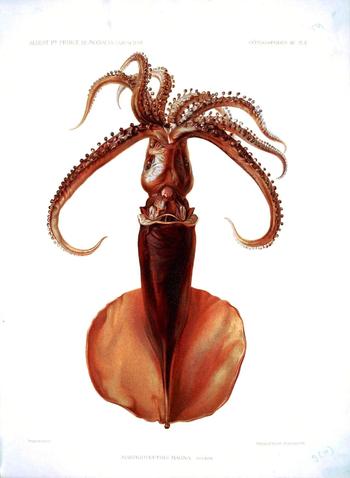About Cephalopods
Distant relatives of snails and clams, cephalopods are a class of marine molluscs that includes squid, cuttlefish, octopuses and nautiloids. Based on fossil records, the cephalopoda class has a history that spans some 500 million years. Today cephalopods are found in all the world’s oceans.
All cephalopods share certain traits: sophisticated eyes, arms and/or tentacles, and the ability to change colors.
Cephalopod eyes represent an example of convergent evolution because of a key similarity to vertebrate eyes. In both cephalopod and vertebrate eyes light enters through a pupil and then is focused onto a retina. The mechanisms for accomplishing this differ: while vertebrates make use of muscles surrounding the lens to manipulate its size, cephalopods move their lens in and out in order to focus. Another key difference is the presence of rhabdomeres in cephalopod eyes (as opposed to the rods and cones present in vertebrate eyes), which allow cephalopods to perceive differences in polarized light. Interestingly, although cephalopods are able to alter the pigment of their skin, most species are color blind.
Cephalopods are able to quickly change color by using tiny pigment-filled sacs, chromatophores, which are located throughout the cephalopod’s skin. By using muscles to contract or expand these sacs, the cephalopod can manipulate the color of their skin. Additionally, some cephalopods also possess an iridescent tissue that can change colors based on the viewing angle. Cephalopods use these two color manipulation techniques in mating rituals as well as to camouflage themselves from predators and prey.
A common misconception is that all cephalopods have tentacles. In fact, all cephalopods have arms but only squid, cuttlefish and nautiloids possess tentacles. “Arms” actually refers to limbs equipped with suckers along the length of the arm, whereas “tentacles” refers to appendages on which the suckers, hooks and nerve endings are only at the end of the appendage. Octopuses possess eight arms, squids and cuttlefish each have eight arms and two tentacles, and nautiluses are equipped with over 90 tentacles.
Contributed by Kane Thomas
Resources:
- University of California Museum of Paleontology <http://www.ucmp.berkeley.edu/taxa/inverts/mollusca/cephalopoda.php >
- Monterey Bay Aquarium Foundation. <http://www.montereybayaquarium.org/animals-and-experiences/exhibits/tentacles>
- The Cephalopod School <http://www.thecephalopodpage.org/cephschool/CephalopodVision.pdf>.





